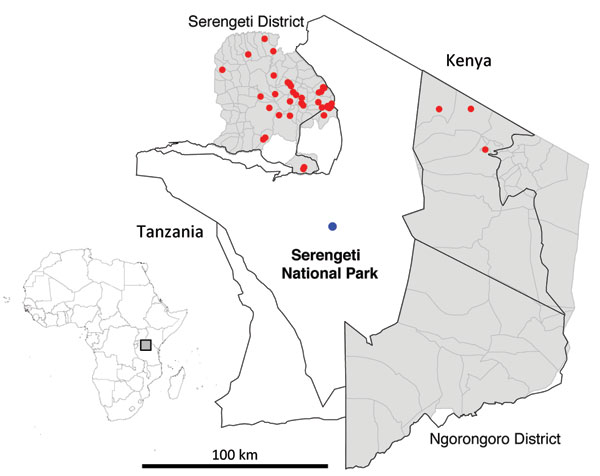Volume 18, Number 4—April 2012
Dispatch
Ikoma Lyssavirus, Highly Divergent Novel Lyssavirus in an African Civet1
Figure 1

Figure 1. Serengeti National Park and surrounding districts (Serengeti and Ngorongoro). Blue dot indicates location of Ikoma lyssavirus–infected African civet within Ikoma Ward in northwest Tanzania. Red dots indicate cases of rabies confirmed during 2003–2011. Top left, map of Africa indicating study area in Tanzania (gray box).
1These data were presented in part at the XXII Rabies in the Americas meeting in San Juan, Puerto Rico, October 16–21, 2011.
Page created: March 15, 2012
Page updated: March 15, 2012
Page reviewed: March 15, 2012
The conclusions, findings, and opinions expressed by authors contributing to this journal do not necessarily reflect the official position of the U.S. Department of Health and Human Services, the Public Health Service, the Centers for Disease Control and Prevention, or the authors' affiliated institutions. Use of trade names is for identification only and does not imply endorsement by any of the groups named above.